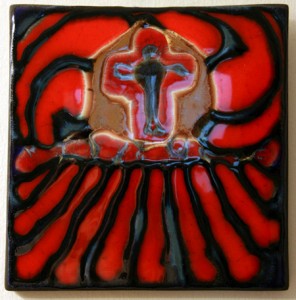As some of you may know, I do not offer prints of my work. I’ve only ever had a handful of people ask me if I make prints of my paintings, so I’ve never felt it was a popular item. I even took a poll and people were 100% interested in Original Work only. Many would rather have a small painting than a reproduction. With that said, I thought it would be useful to give an overview of prints for those of you on the fence about offering prints or if you are looking to purchase a print.
First, the term “print” has become a bit muddied. I use the term print here because that has become the common understanding, however, print actually comes from the process of printmaking. Printmaking involves creating an image by etching, drawing, or carving on various media such as wood, copper, linoleum, stone, fabric, etc. and inking the design before pressing it by hand or through a printing press to transfer the image. The original work used to create the fine art print is created by the artist and destroyed by the artist afterwards. Hence, the edition of prints is limited.
Digital prints, reproductions, or giclees are printouts of an existing artwork, usually printed by someone other than the artist, and are never truly limited as anyone can print the image again since it is digital. (There is no plate to destroy.) Regardless of the quality of the reproduction, these type of prints do not go up in value as they are not an actual fine art print. In addition, many of these prints are not even produced with the original work of art present, therefore the colors in the printout will vary from the original.
That being said, I am an artist and having actually studied printmaking as part of my college curriculum, I do have a bias for original art. However, if you are a fan of Van Gogh, for example, the only way you can feasibly own an image of his work would be through a reproduction. Be sure to look for high quality, archival materials- meaning they will hold up over time and not fade- when purchasing your prints. Prints can fade easily not only due to UV exposure, but also humidity, temperature, and even the air.
So next time you are considering a fine art print or a reproduction, here is a glossary of terms to look for:
Aquatint: A process imitating watercolor or wash drawings by etching a microscopic crackle on the copperplate intended for printing.
Artist’s Proof: An early set of prints pulled for the artist’s own use, marked as A.P. Sometimes (10-30%) higher in value than the regular edition prints.
Drypoint: Engraving technique, especially on copper, in which a needle is used for producing furrows having a burr that is often retained in order to produce a print characterized by soft, velvety black lines.
E.A.: (epreuve d’ artiste) French for Artist’s proof.
Edition: A number of art prints of the same image, all the same size and as close to identical as possible.
Etching: Image created on a metal plate, glass, etc., by the corrosive action of an acid instead of by a burin.
Giclee: Printed artwork or photograph produced by using a high quality digital inkjet printer.
Intaglio: Incised carving, as opposed to carving in relief.
Linoleum Cut (or Linocut): A relief technique using linoleum rather than wood.
Lithography: Image created on a flat, specially prepared stone, with some greasy or oily substance, in which printing ink sticks to the greasy areas.
Mezzotint: A method of engraving on copper or steel by burnishing or scraping away a uniformly roughened surface.
PA: (Prova d’Autore) Italian for Artist’s proof.
Silkscreen (or Serigraph): a printmaking technique in which a mesh cloth is stretched over a wooden frame and the image is painted on the screen or affixed by stencil, and printed by having a squeegee force color through the pores of the material in areas not blocked out by a glue sizing.
Woodcut: Carving into a block of wood in which prints are made from the inked relief areas.
————
Sign up for my monthly newsletter at: www.amyguidry.com/contact.html
Follow me on Facebook: www.facebook.com/pages/Amy-Guidry/51953219932


